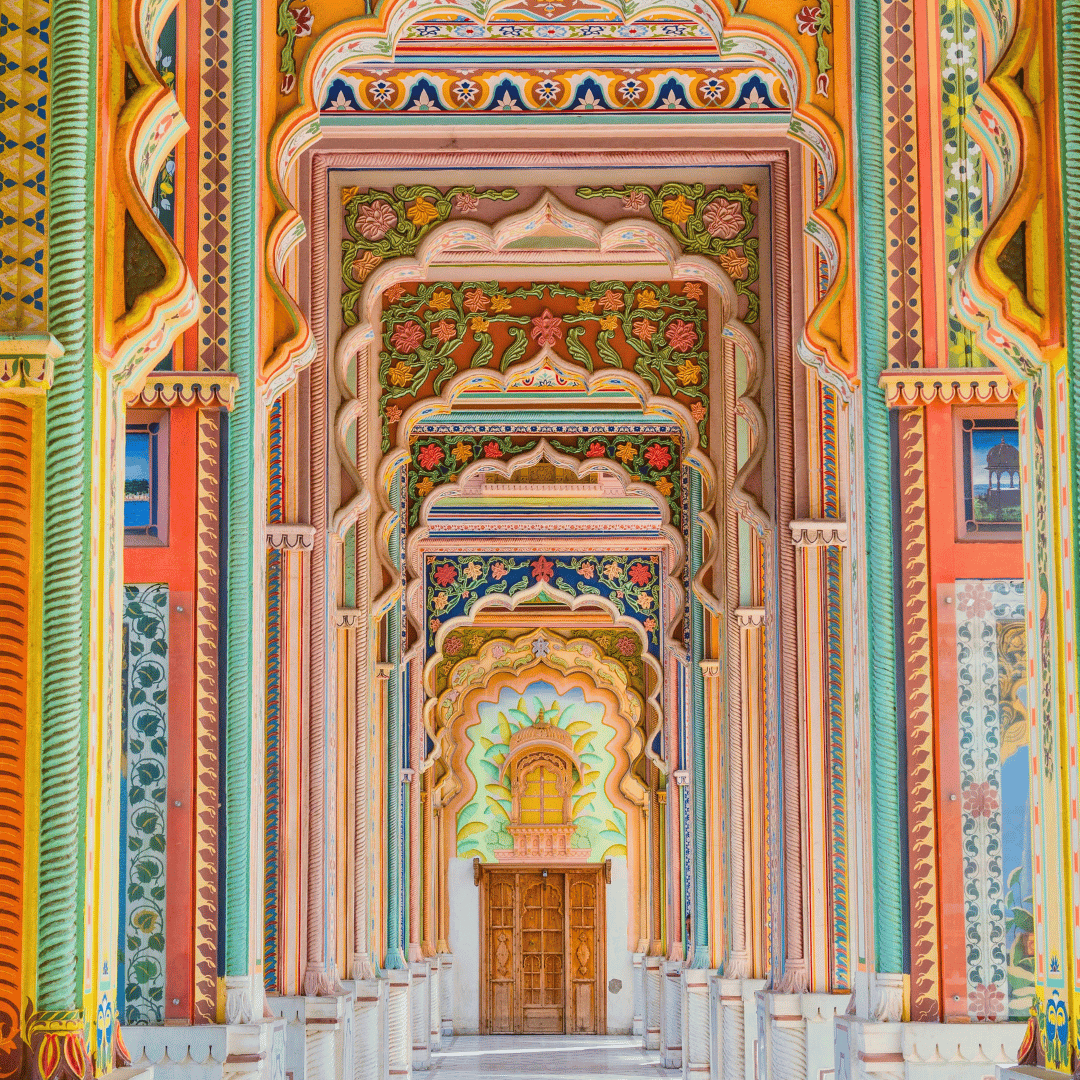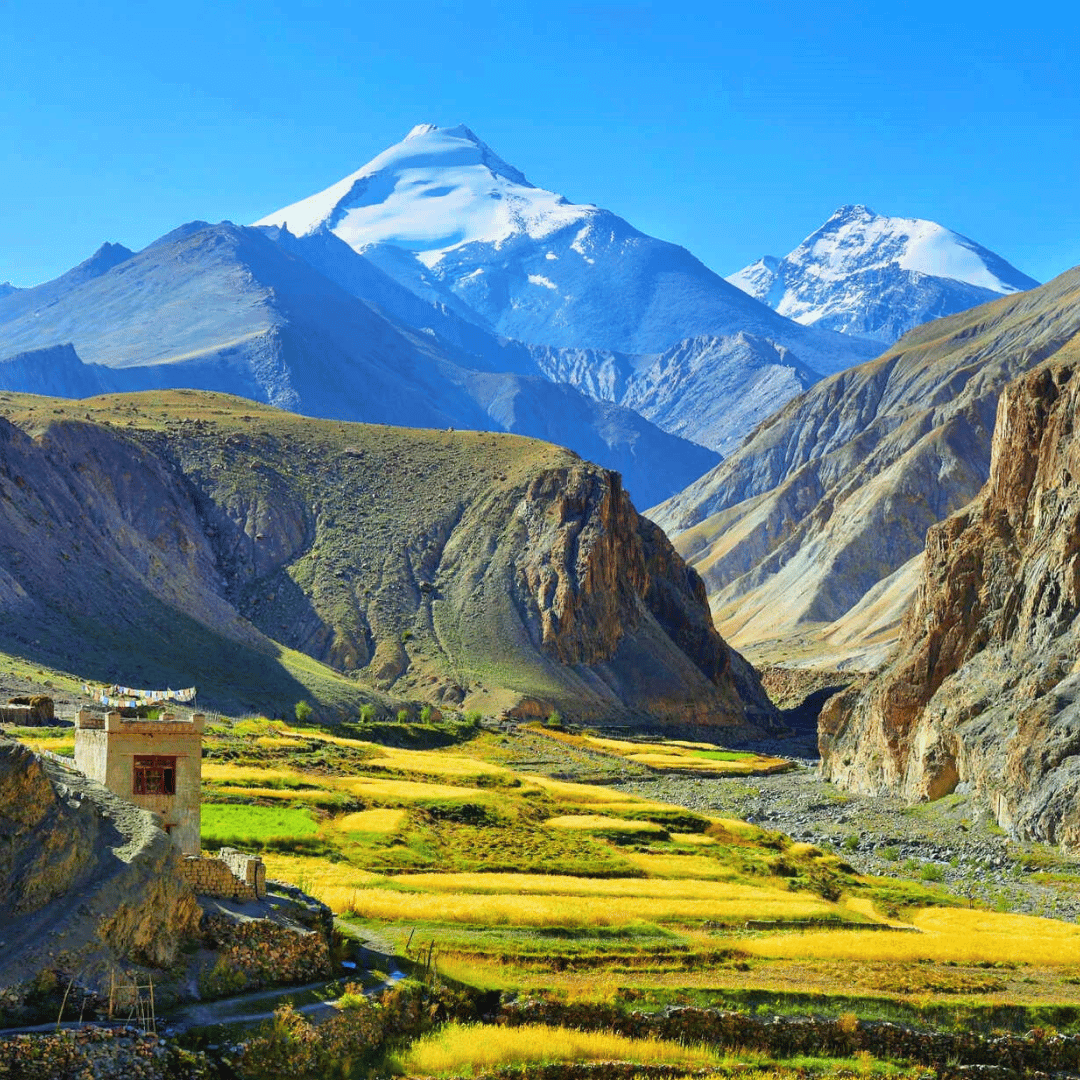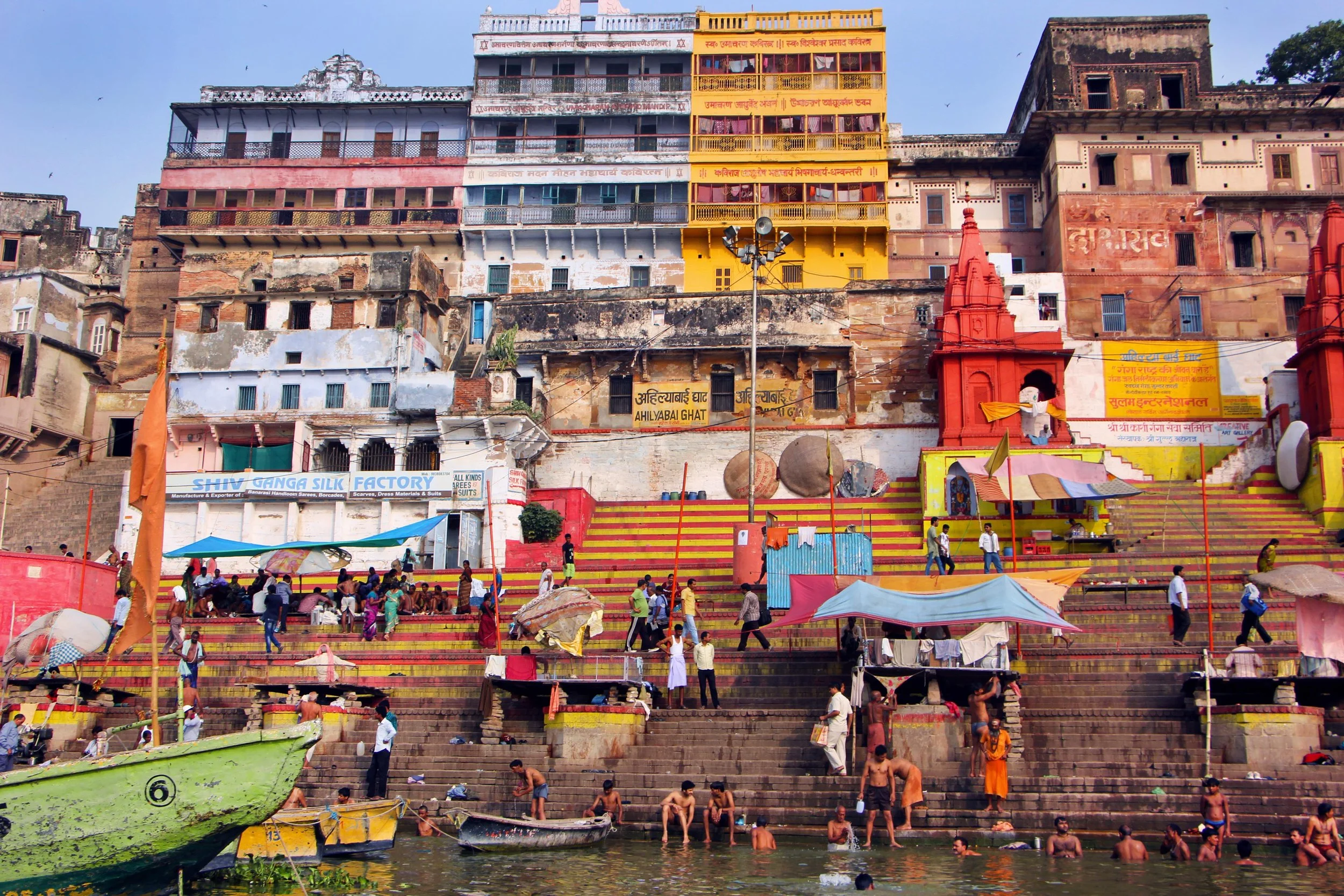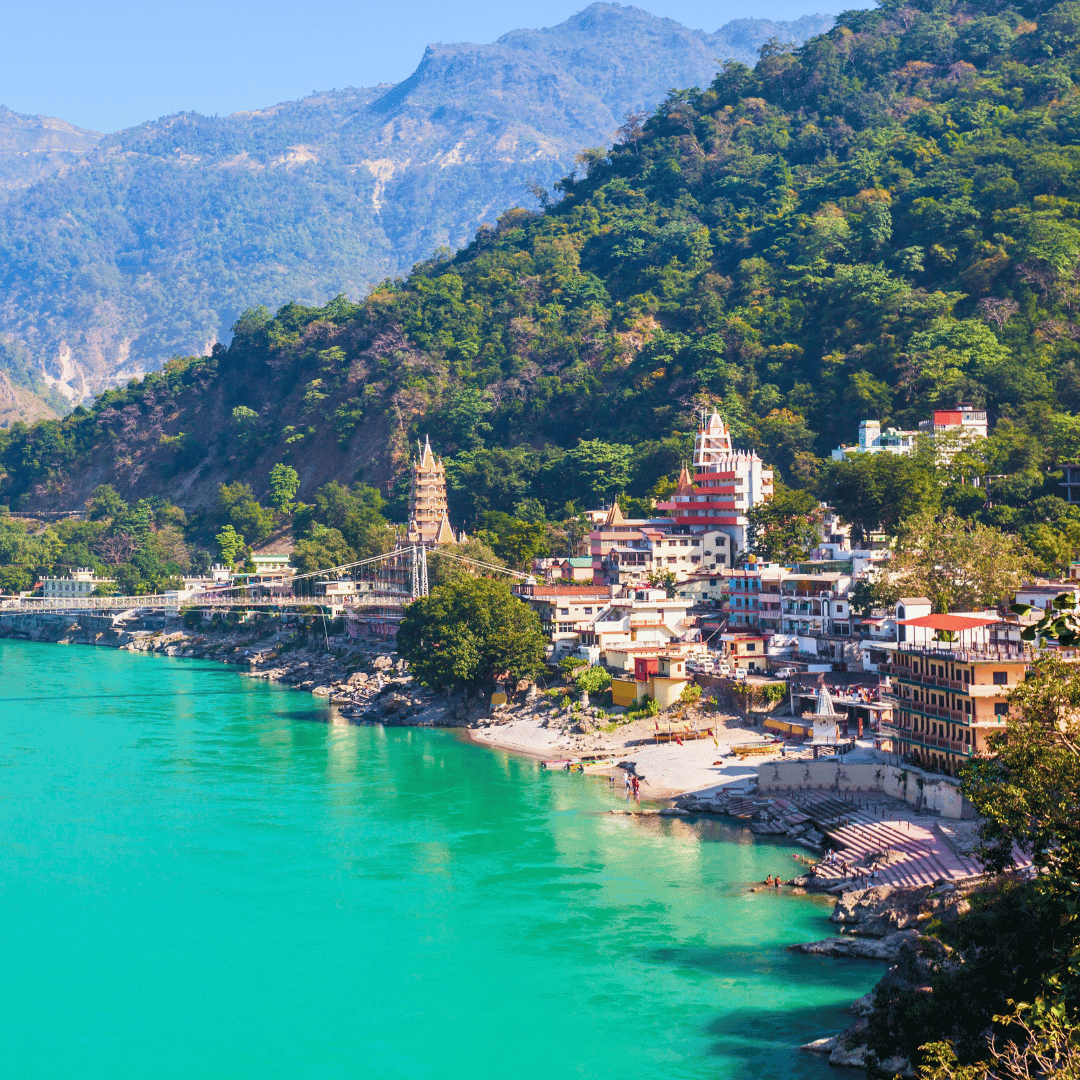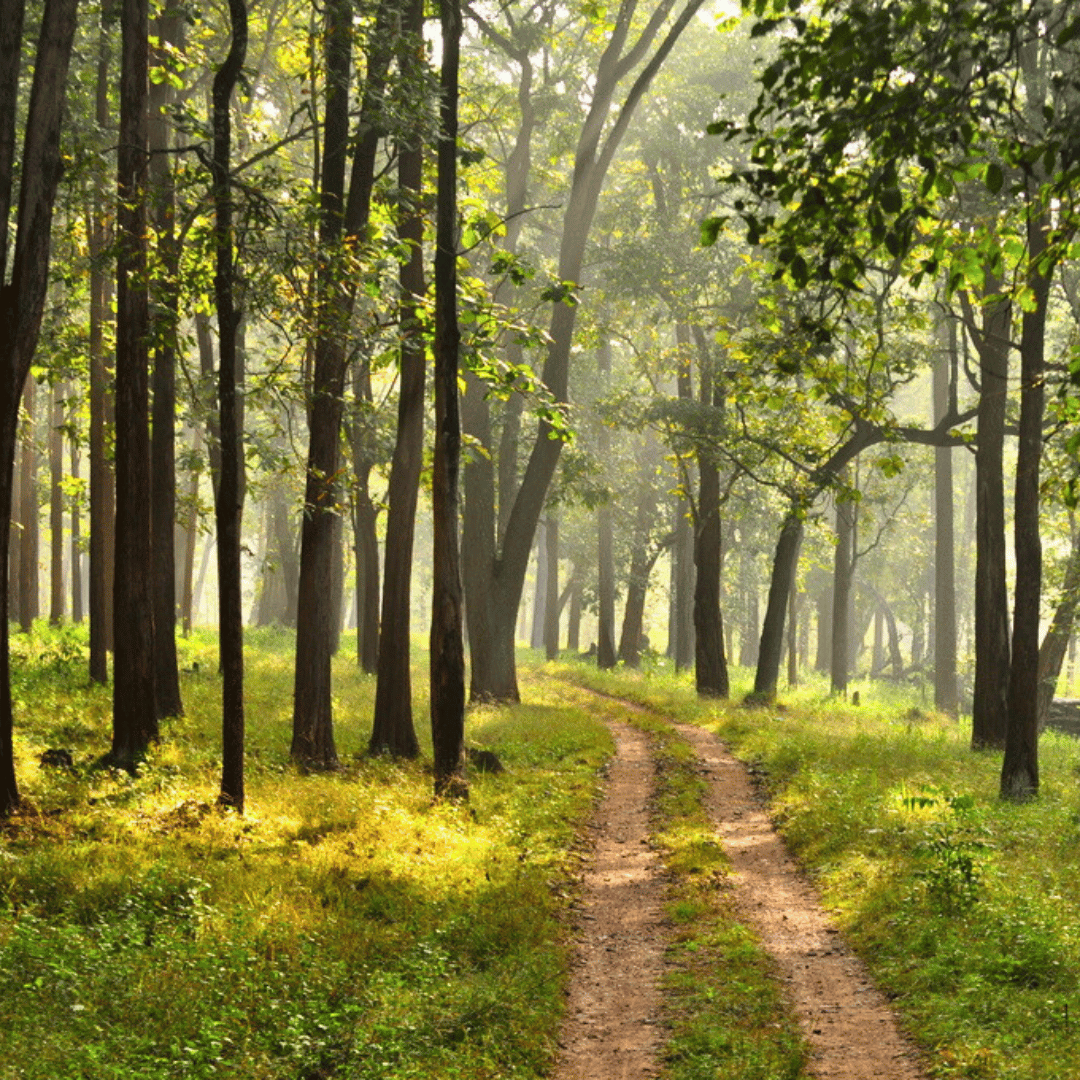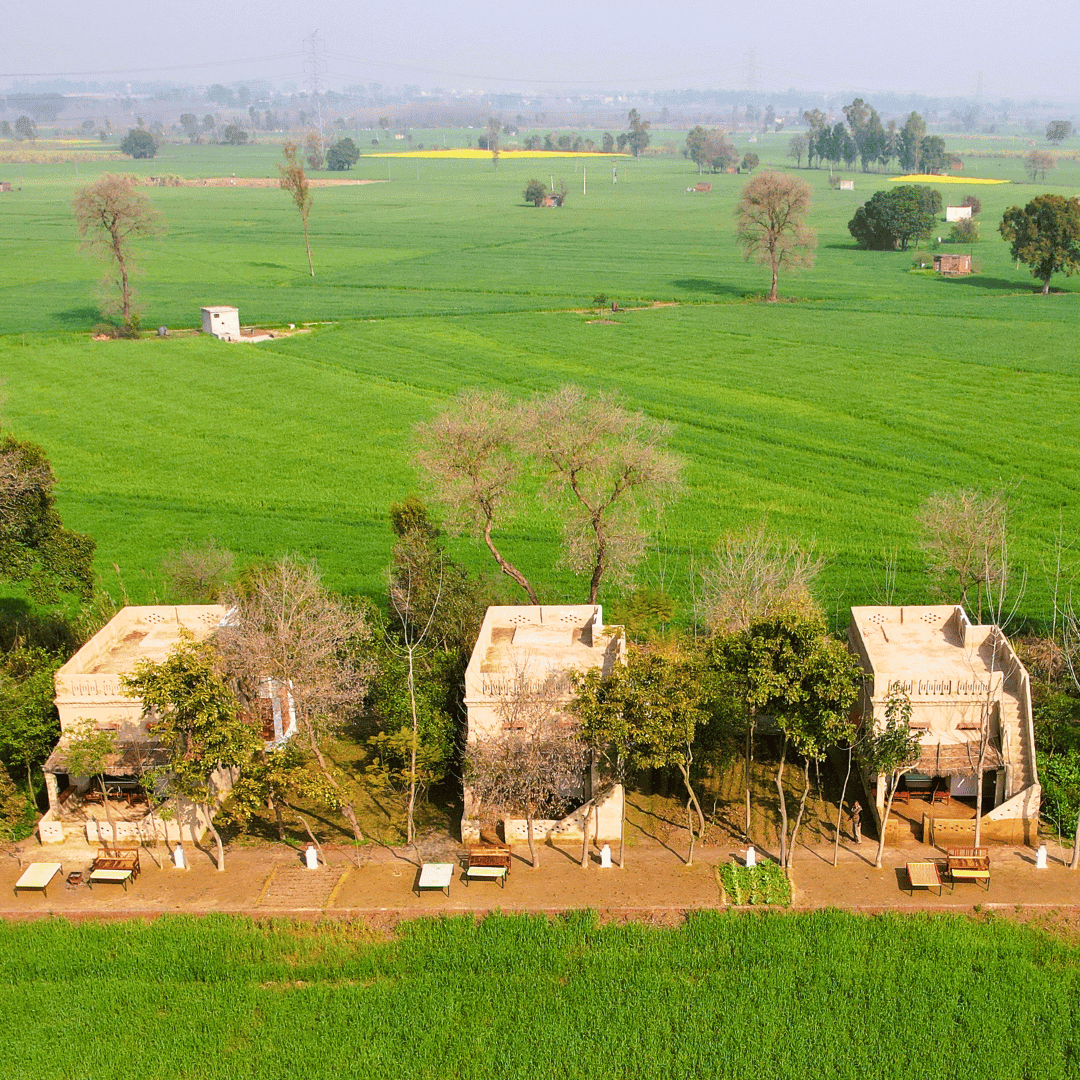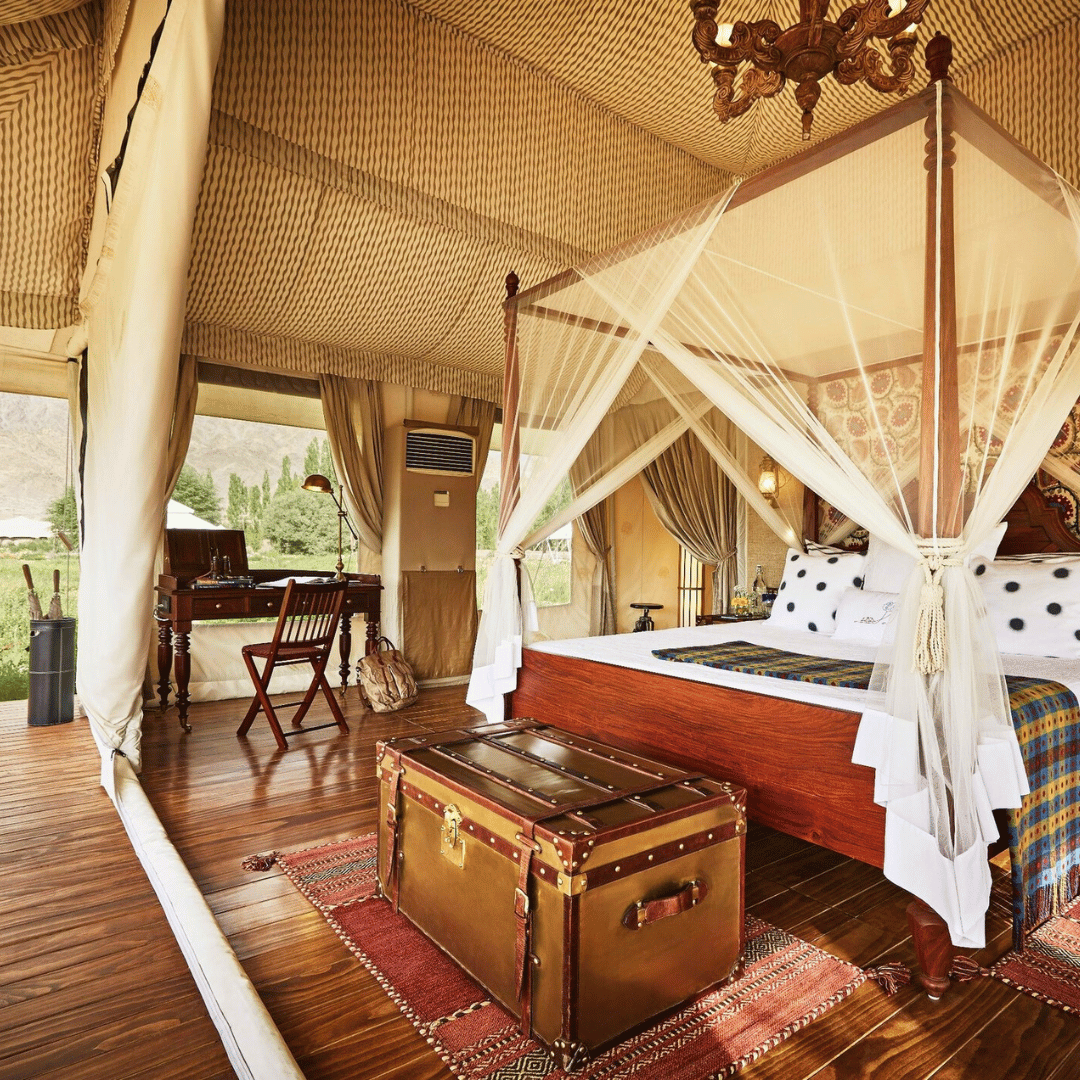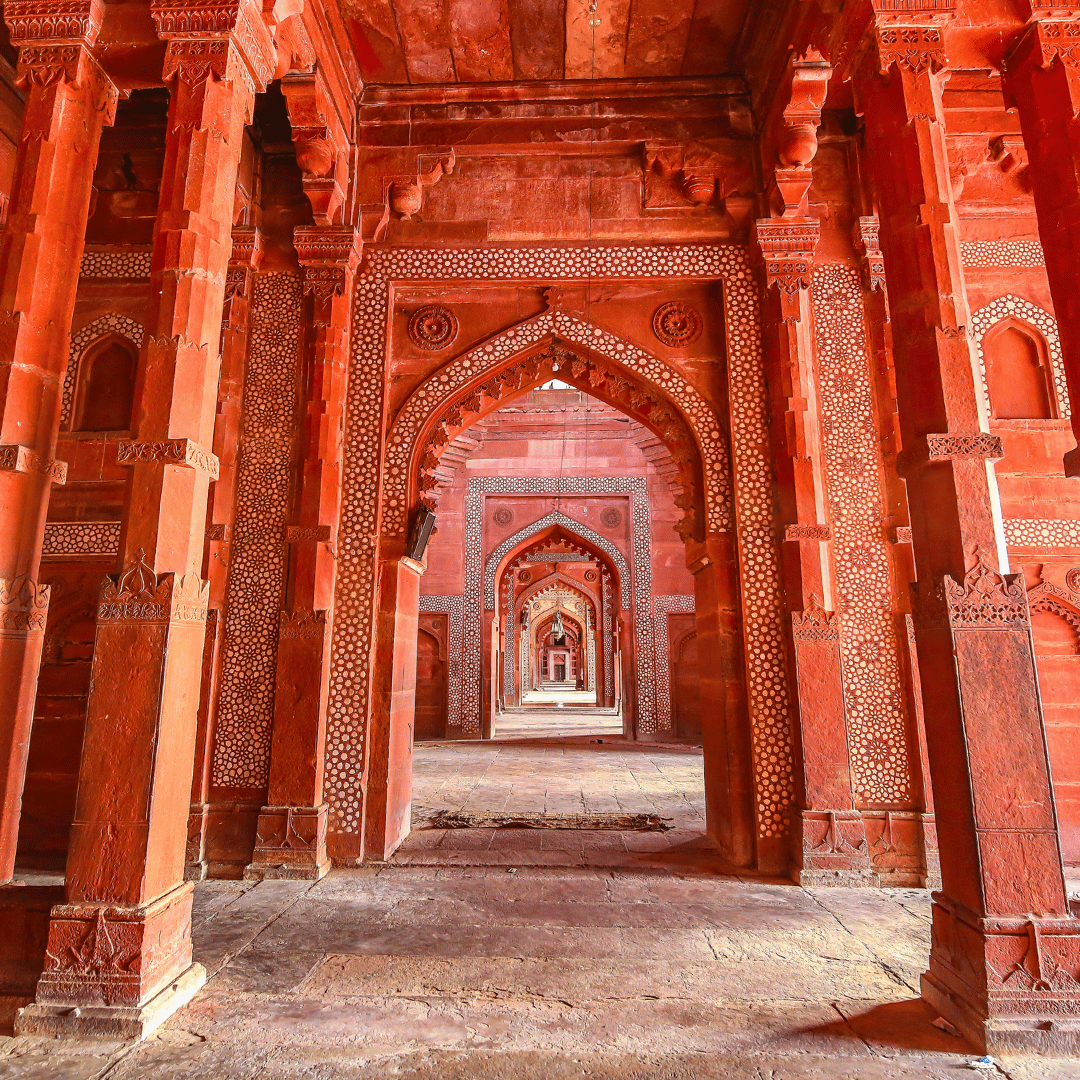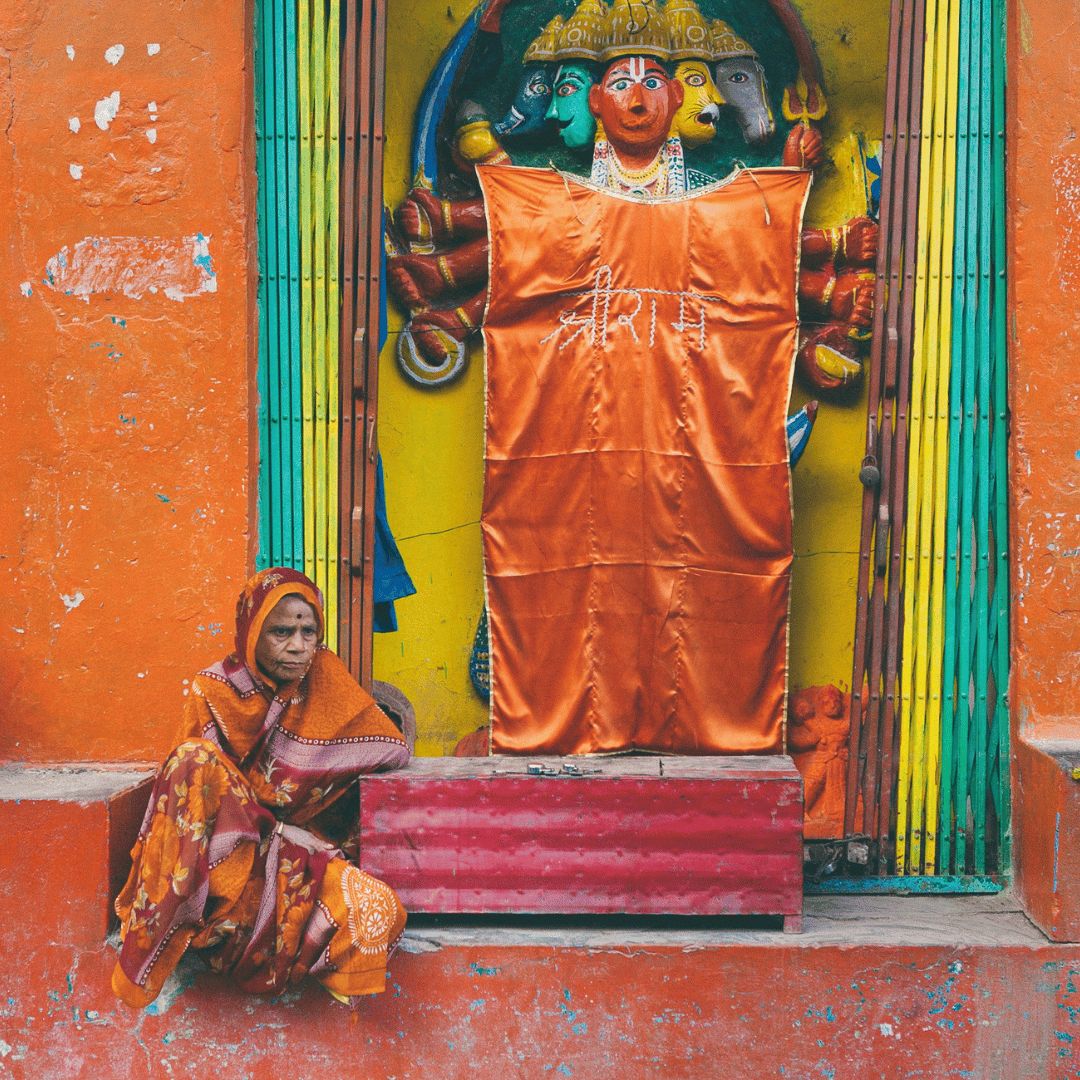
North India Tours
North India is a region of striking contrasts and deep cultural significance, offering travellers a diverse and rewarding journey through some of the country’s most iconic destinations. From the snow-capped peaks of the Himalayas in Himachal Pradesh and Uttarakhand to the arid plains and majestic forts of Rajasthan, the north presents a blend of natural beauty, history, and spirituality. Delhi, the capital, is a bustling gateway that balances ancient monuments with modern life. Agra is home to the Taj Mahal, one of the world’s most famous landmarks, while Varanasi offers a more spiritual experience along the banks of the sacred Ganges. Bespoke North India tours can combine these highlights into carefully curated itineraries that include visits to Mughal palaces, centuries-old temples, vibrant bazaars, and traditional villages. Travellers can explore the architectural grandeur of Jaipur, enjoy sunrise boat rides in Varanasi, or venture into the Himalayan foothills for a more tranquil escape. Whether you're seeking cultural immersion, historic insight, or natural beauty, North India tours offer a rich and varied experience that brings together the heritage, colour, and complexity of the region.
Popular Destinations In North India
North India Hotel Recommendations
North India Travel Advice
-
Travelling through North India offers a fascinating glimpse into the country’s history, culture, and spiritual life. From the grand Mughal architecture of Delhi and Agra to the royal heritage of Rajasthan and the sacred riverbanks of Varanasi, this region is full of unforgettable experiences. The variety of landscapes and cities means you’ll often find yourself moving between fast-paced urban life and quieter, more reflective settings.
The region is home to many of India’s most important religious and historical sites, including temples, mosques, forts, and palaces. Visiting these places comes with certain customs and etiquette. It's expected to remove your shoes before entering religious spaces and to dress modestly, particularly at temples and shrines. Covering your shoulders and knees is a good general rule, and being mindful when taking photos - especially of people or rituals - is appreciated.
North India can be intense, particularly in its cities. The sounds, colours, traffic and crowds can be overwhelming at first, especially if it's your first time in India. But with a bit of patience and an open mind, it quickly becomes part of the experience. Slowing down and taking things in at your own pace can help you connect more deeply with your surroundings.
Travel times between destinations can be long, even if they don’t look far on a map. Road and rail infrastructure varies, and journeys often take longer than expected. Hiring a private driver or taking the train are popular options, and both give you a chance to see more of the countryside. Travelling slowly and allowing space in your itinerary for rest or unexpected discoveries can make your experience far more enjoyable. In a nutshell, don’t fall into the trap of trying to squeeze too much into one trip - it can take a lifetime to cover all of North India!
-
Geographically, North India covers a wide area stretching from the Himalayan mountains in the far north of India, to the western deserts and eastern plains. While regional definitions may vary culturally or politically, the states and union territories that fall within the geography of North India include:
Jammu & Kashmir (Union Territory)
Ladakh (Union Territory)
Himachal Pradesh
Uttarakhand
Punjab
Haryana
Delhi (National Capital Territory)
Uttar Pradesh
Rajasthan
Bihar
Jharkhand
Chandigarh (Union Territory)
Though sometimes grouped separately due to cultural and linguistic differences, states like Bihar, Jharkhand, and Chhattisgarh are also geographically located in the northern half of India. Gujarat, while often associated with western India, shares historical, cultural, and travel links with Rajasthan and is sometimes included in broader North India itineraries.
Including all of these states paints a fuller picture of North India’s incredible diversity. From the high-altitude deserts and Buddhist monasteries of Ladakh to the holy cities of Varanasi and Bodh Gaya, the colonial and Mughal legacies of Delhi, the tribal cultures of Jharkhand, and the stepwells and salt plains of Gujarat - this region reflects the many layers of Indian civilisation.
-
North India is home to a rich mix of languages, reflecting the region’s diverse history and cultures. The most widely spoken language across North India is Hindi, which also serves as one of the official languages of India. It’s commonly understood and used in daily life, especially in states like Uttar Pradesh, Madhya Pradesh, Bihar, Rajasthan, Haryana, and Delhi.
In addition to Hindi, each state has its own regional languages and dialects:
Punjabi is widely spoken in Punjab
Urdu is spoken in parts of Uttar Pradesh, Delhi, and Jammu & Kashmir, often alongside Hindi
Rajasthani dialects are used throughout Rajasthan, though many people also speak Hindi
Garhwali and Kumaoni are spoken in Uttarakhand, particularly in the hill regions
Himachali dialects (like Pahari) are common in Himachal Pradesh
Dogri is spoken in parts of Jammu, while Ladakhi is spoken in Ladakh
English is also fairly widely spoken in urban areas, tourist hubs, and by people working in the travel and hospitality industries, making it easier for travellers to get around and communicate.
-
North India experiences a wide range of weather throughout the year, with each season offering something different depending on where you’re travelling. The region includes everything from the hot plains of Rajasthan and Uttar Pradesh to the snowy mountains of Himachal Pradesh, Uttarakhand, and Ladakh. Knowing what to expect in each season can help you plan the right time to visit, depending on your itinerary and comfort level.
Winter (December to February) is generally the most pleasant time to explore the northern plains. Cities like Delhi, Jaipur, Agra and Varanasi enjoy cool days and crisp evenings, though early mornings can be foggy. In the hill regions, temperatures drop sharply and snowfall is common, particularly in Shimla, Manali, and Mussoorie. Ladakh, in the far north, is extremely cold and mostly inaccessible during this time due to snow-covered roads.
Spring (March to April) brings a gentle warm-up, with sunny skies and mild temperatures in most of the plains. It’s a great time to explore cultural landmarks and city sights before the summer heat sets in. In the hills, the weather is still cool and ideal for early season trekking. Ladakh remains mostly closed but begins to thaw toward the end of the season.
Summer (May to June) sees temperatures rise sharply, especially in the lowlands. Delhi, Agra, and Rajasthan can get uncomfortably hot, often exceeding 40°C. Many travellers head to the mountains in Himachal and Uttarakhand for relief from the heat. This is also the start of the travel season in Ladakh, as roads begin to open and conditions become more accessible for adventure and cultural travel.
Monsoon (July to September) brings heavy rainfall to much of North India, especially in the plains and foothills. While the greenery is beautiful, the rains can lead to delays, flooded streets, and landslides in hilly areas. However, Ladakh remains mostly dry during this time and is in its peak tourist season, making it a popular choice for travellers looking to avoid the rain.
Autumn (October to November) is one of the best times to visit North India. The weather is dry and clear, temperatures are comfortable, and the air is fresh after the monsoon. This season is ideal for exploring both cities and countryside, with major festivals like Diwali and Dussehra adding cultural colour to the experience. The hills are cool and scenic, while the plains are perfect for sightseeing and outdoor activities.
-
What to wear in North India depends heavily on the time of year and the specific regions you plan to visit. The area stretches from the hot, dusty plains of Rajasthan and Uttar Pradesh to the cool foothills of Himachal Pradesh and the high-altitude deserts of Ladakh. Dressing comfortably and respectfully is key, with lightweight, breathable clothing suited to the hotter months and warm layers essential for travel in winter or higher elevations.
In the northern plains and major cities like Delhi, Agra, Jaipur, and Varanasi, summer temperatures can soar above 40°C. Loose-fitting cotton or linen clothing in light colours is ideal, along with a scarf or shawl for sun protection or covering your head in temples. In winter, particularly from December to February, mornings and evenings can be quite cold - so a jumper or light jacket is essential, and in places like Varanasi or Delhi, a heavier coat or layers may also be needed. Spring and autumn are more temperate, so light layers work well as the temperature changes throughout the day.
In Rajasthan and other desert areas, similar rules apply, but it’s worth noting that desert evenings - even in the warmer months - can be surprisingly cool. If you're doing a desert safari or staying in a tented camp, bring something warm for the night. Comfortable walking shoes are also a must, especially for exploring forts, markets, and uneven terrain.
If you're heading to hill stations like Shimla, Manali, or Mussoorie, summer is pleasantly cool, but you’ll still want to pack a jumper or light jacket for the evenings. In winter, these areas often see snow, so proper winter clothing including a warm coat, gloves, hat and thermal layers is important. Footwear should be sturdy and suitable for walking on hilly or slippery ground.
For high-altitude regions like Ladakh and the Spiti Valley, even summer travel requires warm layers. While days can be sunny, temperatures drop quickly at night. A fleece, insulated jacket, and windproof outer layer are essential, along with sun protection - UV exposure is strong at altitude. In winter, these areas become extremely cold and are generally inaccessible to most travellers.
Modesty is expected in rural areas and at religious sites across North India, regardless of season. It’s best to wear clothing that covers your shoulders and knees, and to carry a lightweight scarf to cover your head when visiting temples or mosques. Dressing with cultural sensitivity not only shows respect, but also helps you feel more comfortable and welcomed in different settings.
-
Eating in North India is not just about the food itself - it’s an experience deeply woven into daily life, culture, and tradition. The cuisine here is bold, aromatic, and rich, with strong influences from Mughal, Punjabi, Rajasthani, Awadhi, and Kashmiri cooking. Whether you’re grabbing a quick bite at a bustling roadside stall or sitting down to a home-cooked meal in a rural village, food is a gateway into the diverse identities and stories of the region.
In Punjab, the land of wheat fields and dairy farms, meals are filling and flavourful. Don’t miss classics like butter chicken, sarson da saag with makki di roti, and dal makhani, often paired with generous dollops of ghee or butter. Meals are usually accompanied by freshly made tandoori roti, paratha, or naan, cooked in a traditional clay oven. Lassi, a thick yoghurt-based drink, is often served as a cooling counterbalance to spicy dishes, and comes in sweet or salted versions.
In Delhi and Lucknow, the cuisine has a strong Mughal influence, featuring slow-cooked meat dishes like biryani, galouti kebabs, rogan josh, and kormas. These are often served with rumali roti (a soft, paper-thin bread) or fragrant basmati rice. The street food scene in Delhi is particularly exciting - don’t miss the spicy, tangy delights of chaat, aloo tikki, golgappe (pani puri), and parathas from the city’s famous Paranthe Wali Gali.
Rajasthan, shaped by its desert climate, has a cuisine built around preservation and resourcefulness. Traditional dishes like dal baati churma, ker sangri, gatte ki sabzi, and bajra roti use ingredients that withstand heat and long storage. Flavours tend to be earthy, spiced, and rich in ghee. Because water is scarce, most dishes use yoghurt, milk, and oil in place of water, giving the food a deep, indulgent character. Local snacks like mirchi vada, bikaneri bhujia, and moong dal pakori are also popular, especially when paired with a hot cup of chai.
In Varanasi, Haridwar, and other spiritual centres, food takes on a more devotional tone. You'll find satvik meals, which are vegetarian, lightly spiced, and often onion- and garlic-free, especially in temple kitchens and traditional dhabas. These meals reflect Ayurvedic principles and are intended to be pure and nourishing. Many towns along the Ganges are vegetarian by default, and even the simplest thali can be a surprisingly flavourful experience.
If you’re after something sweet, North India won’t disappoint. Try sticky jalebi fresh from the pan, milky rabri or kheer, syrup-soaked gulab jamun, or the melt-in-your-mouth soan papdi. Sweets are often associated with festivals or special occasions but are widely available year-round in sweet shops and markets.
-
The ideal amount of time to explore North India depends on your interests, but 10 to 21 days is generally recommended for a well-paced itinerary that blends major cities, spiritual sites, rural life, and architectural highlights.
6 - 7 Days: Great for first-time visitors wanting to focus on the Golden Triangle: Delhi, Agra, and Jaipur. You’ll cover iconic sites like the Taj Mahal, Amber Fort, and Humayun’s Tomb. It’s a fast-paced trip that offers a snapshot of North India’s history and culture, though time for deeper exploration will be limited.
10 - 14 Days: Ideal for a more varied and balanced journey. Alongside the Golden Triangle, you can include destinations like Varanasi for spiritual experiences, Khajuraho for its ancient temples, or Orchha for rural charm. This timeframe allows for meaningful cultural encounters, guided walks, heritage hotels, and slower travel.
15+ Days: Perfect for travellers wanting to dive deeper into the region. You can spend more time in Rajasthan, include the Himalayan foothills (like Rishikesh or Shimla), or explore remote areas such as Ladakh or Spiti. Longer trips allow for multi-night stays in fewer places, minimising travel time and adding depth to your experience.
North India’s mix of sacred sites, Mughal and Rajput architecture, local festivals, and diverse landscapes is best appreciated at a steady pace. For those with more time, consider extending into Gujarat, Madhya Pradesh, or even South India for a more expansive journey through the nation.
-
Where do we start! North India and South India are culturally and geographically distinct regions, each offering a different experience for travellers. In fact, many travellers return home feeling like they visited two separate countries.
North India is defined by its dramatic landscapes - from the towering Himalayas to the deserts of Rajasthan and the fertile plains of the Ganges. The climate here varies with the seasons, from cold winters in the mountains to hot summers in the plains. In contrast, South India is tropical and greener, with coastal stretches, lush hill stations, and a more consistent warm climate year-round, punctuated by strong monsoons.
The linguistic divide is also clear. North India is predominantly Hindi-speaking, with several regional languages like Punjabi, Urdu, and Rajasthani. In South India, the main languages belong to the Dravidian family - Tamil, Telugu, Malayalam, and Kannada - making Hindi far less common in everyday conversation, especially in rural areas. This linguistic diversity shapes everything from film and literature to street signage and daily interaction.
Culturally, North India reflects strong Mughal, Rajput, and Sikh influences, which is evident in its architecture - grand forts, domed mosques, and iconic sites like the Taj Mahal. South India, on the other hand, is known for its towering, intricately carved Dravidian temples, particularly in Tamil Nadu and Karnataka, where colourful gopurams rise above temple complexes. These temples are not only places of worship but also cultural hubs, hosting classical dance and music performances that are central to the region’s identity.
Cuisine also highlights the differences. North Indian food is often wheat-based, featuring rich, creamy curries, breads like naan and roti, and widespread use of dairy products like ghee and paneer. South Indian cuisine leans heavily on rice, coconut, lentils, and tamarind, with signature dishes like dosa, sambar, idli, and seafood specialities. The spice profile in the south tends to be sharper and tangier, with a greater emphasis on fresh ingredients and chutneys.
Even traditional clothing and festivals vary. In North India, attire includes salwar kameez, sarees, and more western-style clothing in cities, with major festivals like Diwali, Holi, and Eid widely celebrated. In South India, men often wear lungis or dhotis, and women wear regional styles of sarees. Local festivals such as Pongal in Tamil Nadu and Onam in Kerala reflect agricultural cycles and regional customs.
While both regions are deeply Indian in essence, they offer vastly different experiences. North India is known for its historical monuments, religious pilgrimage sites, and dramatic terrain, while South India offers a quieter rhythm, greener landscapes, and a strong connection to classical arts and temple traditions. Both are equally rewarding, depending on the kind of journey you’re after.
North India Travel Itineraries
Plan Your North India Itinerary
Established in 2007, India Unbound is an award-winning travel company specialising in custom-made journeys and private tours to India. With more than two decades of experience exploring this fascinating nation, we create tailor-made itineraries for discerning travellers looking for a real adventure.
When you start to research a trip to India, it’s easy to feel overwhelmed by the seemingly endless possibilities. At India Unbound, we’ve made this process easy. To see India, we simply need you to tell us relevant information about yourself and the type of travel experience you are looking for - whether it’s a wish list of places you want to visit, a style of travel, a particular interest or theme that you want to explore, or all of these factors. Using this information, we curate a custom-made India private tour just for you. It’s that simple.

